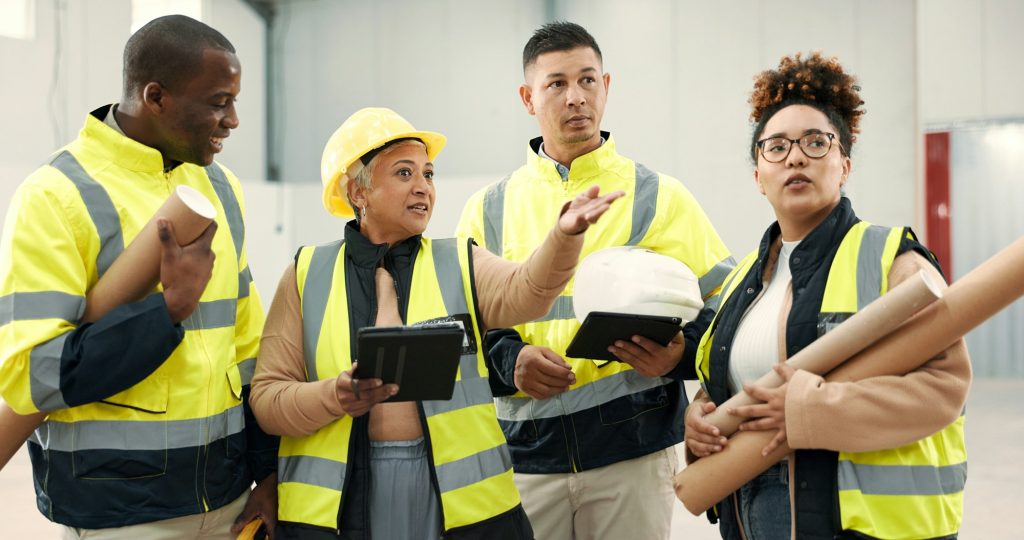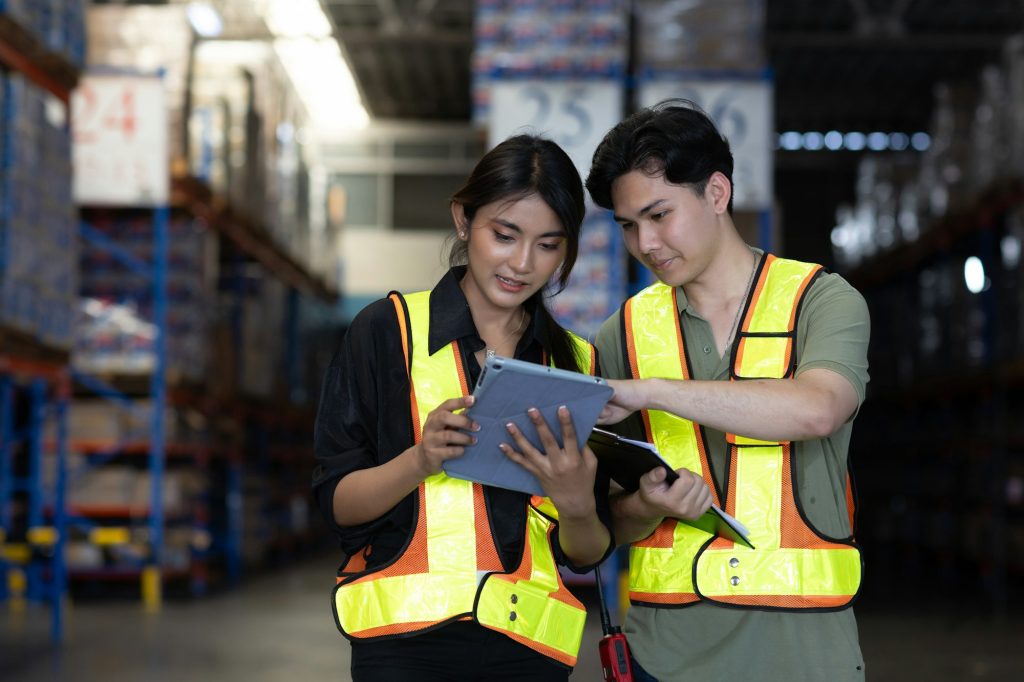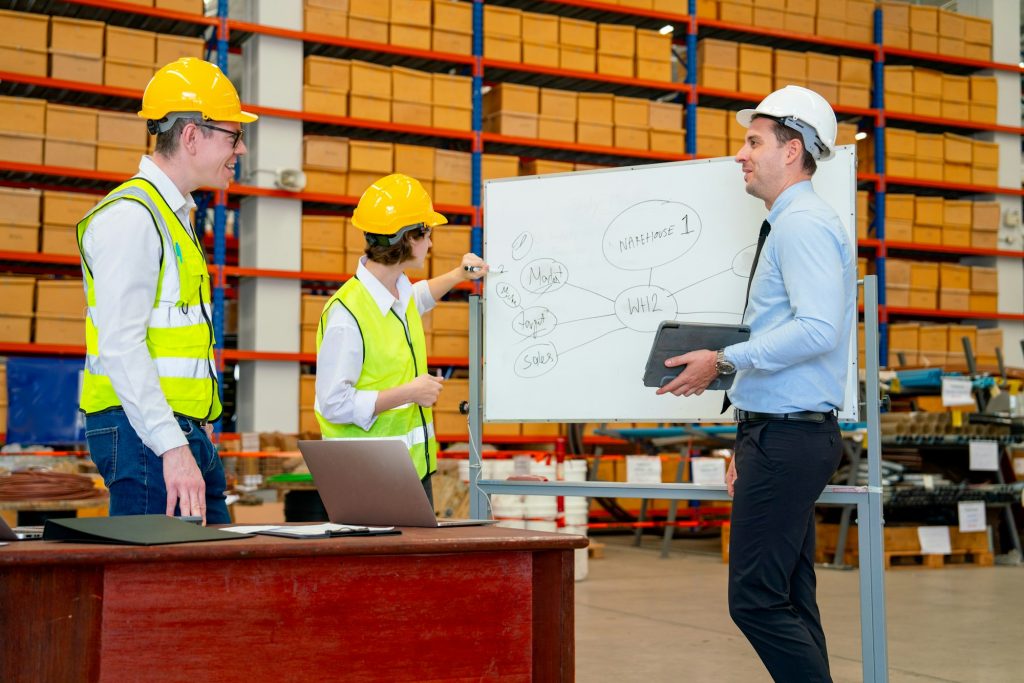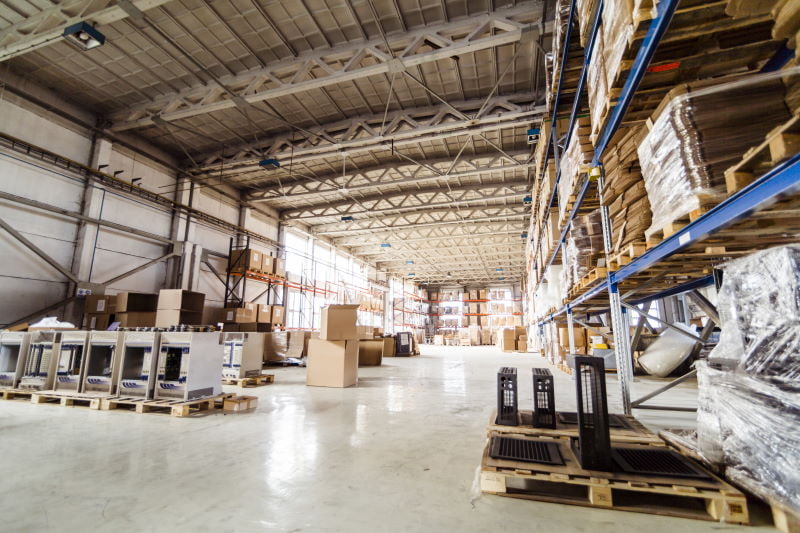Effective warehouse management begins with understanding the impact of layout efficiency on operations. An efficient layout facilitates smooth operations, maximizes space utilization, reduces costs, and improves overall productivity.
Significance of Efficient Design in Warehousing
A well-thought-out warehouse design is crucial for the streamlined operation of logistics and distribution networks. It directly affects the speed at which tasks are performed and impacts overall supply chain efficiency. By optimizing the warehouse layout, businesses can significantly reduce the time and labor involved in locating and moving goods, thereby enhancing operational efficiency and reducing costs.
Objectives of an Optimal Warehouse Layout
The primary objective of an optimal warehouse layout is to create a scalable and adaptable environment that supports the swift and safe movement of goods. It aims to optimize space utilization, minimize handling times, and facilitate accessibility and safety, ensuring that operational capacities are maintained at peak levels.
Initial Planning and Assessment
Before diving into specific layout strategies, it’s crucial to assess the available space and its potential for meeting the company’s operational demands. This assessment lays the foundation for all subsequent planning and design efforts.

Evaluating Warehouse Space Characteristics
Evaluating the characteristics of the warehouse space involves examining its physical dimensions, shape, and features such as doors, docks, columns, and ceiling height. Understanding these factors is vital to determining how the space can best be utilized to meet storage and operational needs.
Development of a Comprehensive Warehouse Blueprint
Creating a detailed blueprint is a critical step in warehouse layout planning. This blueprint should outline all key areas, including storage, receiving, shipping, packing, and sorting areas. It serves as a visual guide for placing equipment and designing workflows that optimize space and efficiency.
Storage Optimization Strategies
Effective storage solutions are fundamental to maximizing warehouse operations. By selecting the appropriate shelving and storage systems, warehouses can significantly improve accessibility and space usage.
Selection of Appropriate Storage and Shelving Solutions
Choosing the right storage solutions involves considering the types of goods stored, their sizes, weights, and how frequently they are accessed. Options range from pallet racking systems for bulky items to modular drawers for smaller components, each designed to optimize space and accessibility.

Effective Use of Vertical Storage Capacity
Maximizing vertical space is essential in warehouses with limited floor space. High-density storage solutions, such as automated storage and retrieval systems (AS/RS), can dramatically increase a warehouse’s storage capacity without expanding its footprint.
Strategic Labeling for Enhanced Item Retrieval
Strategic labeling involves implementing a system that facilitates quick and accurate item retrieval. Labels should provide clear, concise information and be positioned for easy visibility. This system reduces errors and improves the efficiency of operations by speeding up the process of locating items.
Workflow Optimization
Optimizing the workflow within a warehouse is about reducing unnecessary movements and ensuring a logical progression from one task to the next, thereby streamlining operations and reducing waste.
Facilitating a Streamlined Process from Receiving to Shipping
The layout should facilitate a natural flow from the receiving area, through storage, and finally to the shipping area. This flow minimizes cross-traffic and reduces the time goods spend in transit within the warehouse, thereby improving efficiency.
Integrating Technological Solutions for Inventory Management
Technological integration, such as warehouse management systems (WMS), can revolutionize how inventory is managed. These systems provide real-time data on inventory levels and locations, helping to optimize the picking process and reduce errors.

Adoption of Automated Systems for Picking and Sorting
Implementing automated picking and sorting systems can drastically reduce labor costs and improve accuracy. Systems like robotic pickers and automated conveyors streamline operations and allow for continuous movement of goods.
Layout Configuration
The configuration of the warehouse layout must consider both current needs and future growth, allowing for adjustments as business needs evolve.
Importance of Aisle Width and Placement
Aisle width and placement directly affect the efficiency of the operations within a warehouse. Optimizing aisle width to accommodate the handling equipment used can improve accessibility and safety, reducing the risk of accidents and damage to goods.
Equipment Needs and Aisle Space Allocation
The type of equipment used in the warehouse will dictate the space requirements for aisles. For instance, facilities using larger forklifts will need wider aisles than those using hand carts or narrow aisle picking equipment.
Creating Flexible Storage Areas to Accommodate Growth
Designing flexible storage areas involves using modular storage systems and reconfigurable shelving that can be easily adjusted as inventory needs change. This flexibility supports business growth and allows for quick adaptation to new operational strategies without significant downtime or cost. Modular systems can be reconfigured or expanded with minimal effort, making it simpler to respond to market changes and inventory fluctuations.
Safety and Accessibility Measures
Ensuring that the warehouse environment is safe and accessible is paramount. This not only protects employees but also enhances efficiency by reducing the risk of accidents and associated delays.
Maintaining a Safe and Clutter-Free Environment
A clean and organized warehouse reduces safety hazards and increases productivity. Regular maintenance and decluttering efforts are essential to keep pathways clear and storage areas accessible, minimizing the risk of accidents and improving overall workflow.
Implementing Effective Signage, Lighting, and Safety Protocols
Good visibility and clear communication through signage and lighting are crucial for safety and efficiency. Properly marked and illuminated aisles, hazard signs, and operational instructions help prevent accidents and ensure that workers can perform their tasks more efficiently. Adhering to safety protocols, such as proper handling procedures and emergency response plans, further ensures a secure workplace.
Enhancing Operational Efficiency
Optimizing the operational efficiency of a warehouse involves a continuous effort to refine processes and integrate technology that supports rapid and accurate order fulfillment.
Using Data and Analytics for Layout Optimization
Leveraging data and analytics helps to continually refine the layout and operational strategies of the warehouse. By analyzing workflow patterns, storage utilization, and order processing times, managers can identify inefficiencies and make informed decisions to enhance the configuration of storage and workflow areas.
Dynamic Reconfiguration of Storage Areas Based on Demand
The ability to dynamically adjust storage layouts in response to varying demand is a hallmark of modern warehousing. Flexible design and technology-driven systems allow for the reassignment of storage spaces and resources as needed, ensuring optimal efficiency across fluctuating business cycles.
Employee-Centric Design Considerations
Prioritizing the needs and safety of warehouse staff not only promotes a positive work environment but also enhances productivity and operational efficiency.
Provision of Adequate Amenities and Break Areas for Staff
Providing comfortable and well-equipped break areas for staff is essential for maintaining high levels of employee satisfaction and productivity. These spaces offer workers a place to rest and recharge, which is critical in physically demanding warehouse operations.
Comprehensive Training Programs on Warehouse Operations
Investing in comprehensive training programs for new and existing employees ensures that all team members are proficient in the latest warehouse operations and safety standards. Well-trained employees are more efficient and can adapt more quickly to changes in procedures and technology.
Practical Implementation and Evaluation
The theoretical planning of a warehouse layout must be tested and evaluated in real-world conditions to ensure its effectiveness.
Conducting Simulations and Workflow Tests
Before final implementation, conducting thorough simulations and workflow tests helps identify potential issues and allows for adjustments before full-scale operations begin. This proactive approach helps avoid costly disruptions and ensures that the layout is optimized for actual working conditions.
Feedback Integration and Continuous Layout Improvement
Gathering and integrating feedback from staff who operate within the layout daily provides valuable insights that can lead to continuous improvement. Regular reviews and updates to the warehouse layout, driven by direct feedback and operational data, help maintain a high level of efficiency and adaptability.
Conclusion
Summary of Key Strategies for Warehouse Layout Efficiency
Implementing strategic planning, safety measures, flexible designs, and continuous evaluation are key to maintaining an efficient warehouse layout. These strategies ensure that the warehouse can meet current and future demands while optimizing operations and safeguarding employees.
The Importance of Continuous Adaptation and Evaluation
The dynamic nature of logistics requires warehouses to continually adapt and optimize their layouts and operations. Ongoing evaluation and adaptation to technological advancements and market conditions are essential to sustain operational efficiency and competitive advantage in a rapidly evolving industry landscape.

